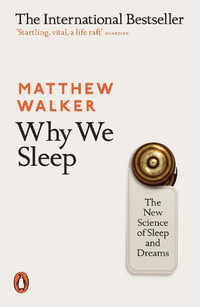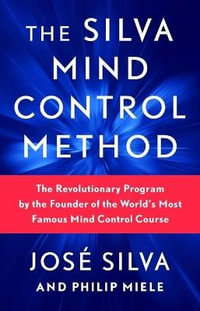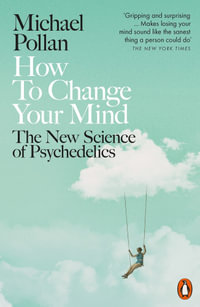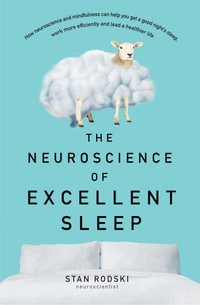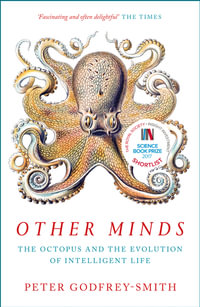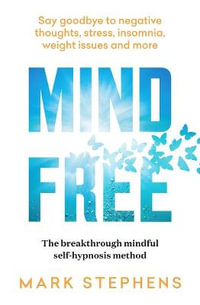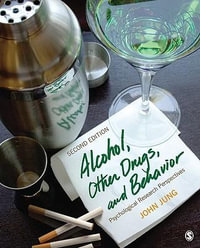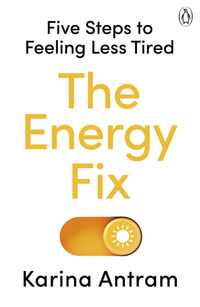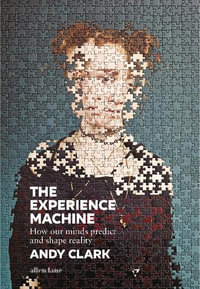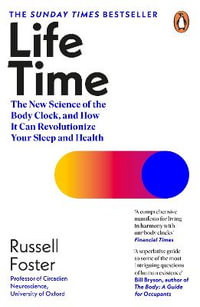
Hypnotic Use of Waking Dreams
Exploring Near-Death Experiences Without the Flat Lines
By: Paul W Schenk
Paperback | 14 January 2007
At a Glance
192 Pages
23.29 x 16.54 x 1.4
Paperback
RRP $50.99
$50.50
or 4 interest-free payments of $12.63 with
orAims to ship in 5 to 10 business days
People who undergo near-death experiences often have profound and life changing experiences. It is as if the whole of their life has been put into perspective and they can see relationships, experiences, hopes and dreams in a completely new light. Clinical psychologist Paul W. Schenk shows you how you can help clients experience some of the life changing benefits of a near-death experience without the life-threatening cardiovascular crisis. With full length annotated case transcripts, you will learn how to do this and explore the many other things you can do with hypnotically facilitated waking dreams.
The therapeutic usefulness of dream interpretation is deeply rooted in psychotherapy. Good fiction can make for rich clinical material. The Hypnotic Uses of Waking Dreams bypasses the core problem associated with past life therapy, i.e. that if reincarnation doesn't exist, neither can past life therapy. It provides a much more traditional approach to understanding and utilizing the kinds of clinical experiences that occur with this interactive approach to hypnotically facilitated dream-like imagery. Dr Schenk integrates classic teachings on dream interpretation and trauma treatment with decades of published work on near-death experiences. The therapeutic use of waking dreams is independent of both the clinician's and the client's beliefs about reincarnation because the dream content can be understood as being just good fiction as it is in classical dream analysis.
The secondary market is seen as the large segment of the lay public who have followed the writings of authors such as Drs. Brian Weiss, Raymond Moody, Carolyn Myss, Gary Schwartz, Kenneth Ring, and Ms. Carol Bowman. The varied themes in the case studies were chosen for their broad appeal. Feedback on the current manuscript suggests readers find the material deeply moving and thought provoking.
Industry Reviews
Dr Schenk is a clinical psychologist in private practice in Atlanta, Georgia, USA. Working in hypnosis for more than 25 years, he is an approved consultant with the American Society of Clinical Hypnosis. He is obviously a very skilled therapist and his style of writing is pleasant and easy to read. The title of the book, however, is slightly misleading because it is more about past-life work than near-death experiences; but that in no way detracts from it contents. It is well written, skillful and huge relief from yet another book on therapy by numbers.What the book is really about is personal narrative transformation through a cross between past-life work and hypnotic dream therapy. The author is without doubt a master of narrative and reframing, taking clients through past-life journeys that lead them to greater understandings and resource release in their present life path. Clients can undergo anything from an epiphany to slow conversion of self-realisation. Although the book does not tell us about Schenk's background, he can obviously be lusciously Jungian with touches of Erickson which hangs on the peg of Moody.So many hypnotherapists are afraid of past-life work because they don't want to appear left of Zelda The Crystal Ball Gazer. Schenk, however, shows us the pure depth and power of such work that can motivate great change within the client in a direct an indirect manipulation of physical development. His case examples are illustrative and instructive, showing his very high level of rapport with his clients while facilitating the multiple persona integration.The book also shows us that the art of past-life work requires creativity on the part of the therapist and how that pays off, not only for the client, but in hugely rewarding ways for the therapist. His analysis and integration skills can give us all lessons in how to work the story and underlying therapeutic techniques, out of the client's conscious awareness.I think almost all hypnotherapists will like this book because it clearly shows the skillful workings of a clinician who is unreservedly passionate about the way he uses hypnosis. Furthermore, reading through it is an exercise in itself of metaphor construction and deconstruction. Whether you believe in past lives or not, there is certainly is lot to commend that way of working in these pages. Having used past-life work for many years myself, I greatly enjoyed Schenk's skilled use of creative imagery to get the client to utilise whatever they needed from the past life and in between life experiences.
Dr Tracie OaKeefe DCH, Hypnosis Australia On Line Journal
Dr Schenk, a clinical psychologist, explores near-death experiences to offer an understanding of the power of waking dreams. Although primarily aimed at counsellors and therapists, there is much for the lay person interested in the subject-particularly the varied themes of the case studies.
Publishing News, Friday 1
Have you ever fantasized about being someone else, or wondered who you might be, if you were living at another time and in another place? Do you ever dream that you are living a life other than your own? In The Hypnotic Use of Waking Dreams psychotherapist Paul W. Schenk explores the therapeutic and spiritual implications of imagined alternative lives. Through awaking dreamsa Schenk invites his clients to imagine themselves as another person, living another life, as a adream character.a The dream life provides the client's medium for working through current life issues and problems from another perspective. Schenk hypnotically guides his clients to imagine being the main character in a fictional lifea-one made up entirely by the client. The client describes significant events in this imagined life and then narrates the dream character's death and after-life experiences. Schenk believes that the true power of the waking dream begins in the after-life episode, a time of philosophical reflection and spiritual exploration. The author draws from the work of Raymond A. Moody Jr. M.D., who, in the 1970s wrote an astonishing bestseller, Life after Life, in which he documented interviews with people who recounted their near-death-experiences (NDEs). Moody found that NDEs contain common features: awareness of death, feelings of peace, a sense of bodily separation, entering a dark region, seeing or being enveloped in light, encountering spirit entities or deceased loved ones, and a return to the physical body. Schenk tells his readers that when his clients describe the death of the dream character, they report experiences similar to those of an NDE. Schenk's tenet is that by imagining the after-life experience of an imaginary self, the client can reflect upon the deeper meanings and purposes of his or her own life. He asks, aWhat did you learn from this life?a The waking dream is reminiscent of Dorothy's adventure in the Wizard of Oz. Waking dreams serve many purposes for clients:
- Clients discover previously unrecognized faulty assumptions about a problem.
- They can safely try out new solutions in a virtual reality.
- They can develop abilities and relationships they lack.
- They see their problems from another perspective.
- They establish a cue to remind them to carry their insights forward into their real lives.
- They develop insights into the dynamics of their current relationships.
- They use the waking dream to address metaphysical, existential, and spiritual issues.
Judith E. Pearson, PhD
I have an open mind on near death experiences (or NDE's as they seem to be called these days). Are they real or imagined? I really don't know. And I have to say that this book doesn't convince me of their reality. After describing the benefits of dreaming and reviewing the history of NDE's, the book is replete with case studies which, although subjective, are still enjoyable to read a but more as fiction than actual fact. But saying that, Paul Schenk offers an interesting viewpoint on the subject. Being a proponent of hypnosis, I know how beneficial it can be for clients. And maybe if you substitute the words aguide' and adream character' with the word aunconscious', it could have some therapeutic worth. I am just not sure how easily it would be accepted by clients in the UK.
Terri Bodell NACHP
Logical, clear and thorough. This author opens the reader up to the imagery world of waking dreams and the unique therapeutic value of clients (and ourselves) working in this way. This book is all you will need to be able to effectively work in this way. Schenk explains the theoretical concepts brilliantly and then takes you on a journey with his clients in their work with waking dreams. A book that will leave you thinking about yourself and your work with clients.
Tom Barber, CCTS Senior Tutor
Many people have returned from a true near-death experience (NDE) and reported having met the aWhite Light.a They all say the encounter was profoundly comforting and free of anxiety. By using an extension of Sacerdote's ainduced dreama technique, Dr. Schenk leads his clients to a therapeutic encounter with the White Light without the danger of a NDE. His case reports are fascinating.
Dabney M. Ewin, MD, FACS Clinical Professor of Surgery and Psychiatry Tulane University Medical School Clinical Professor of Psychiatry Louisiana State University Medical School
McNeilly was a general practitioner of medicine as a family doctor for ten years before being exposed to Milton Erickson in the 1970s. He is now one of Australia''s most vocal proponents of Ericksonian style of hypnotherapy and counselling and a member of the Association of Solution Oriented Counsellors & Hypnotherapists of Australia (ASOCHA), which is a member of the Psychotherapy and Counselling Federation of Australia (PACFA). He has been teaching hypnosis and solution-focused learning in Melbourne and at congresses for 25 years, where he is a director of The Centre of Effective Learning.
There is little doubt that McNeilly''s style is Ericksonian, yet he does allow himself to have a counselling style of his own to come through his work. The first case presented is that of fighting twins whose behavior has become a problem for their family. He very cleverly manoeuvres the twins into utilising their existing fraternal resources in order to alter their interactive behaviours into a more compatible camaraderie. Because twins often exclude people attempting outside interference into their relationships, this kind of approach could be very good viewing for social workers and family therapists as well as hypnotherapists. This case is also a very good demonstration of indirect suggestion through interactive narrative-induced role-playing with children.
The second case was a young boy with enuresis and the third a girl with a dog phobia and soiling who also suffers from Asperger''s Syndrome. This DVD is not prescriptive hypnosis, nor therapy dogma, but a demonstration of how practitioners can interact with young children hypnotically in non-combative, confrontational or direct styles to form learning alliances.
Dr Tracie O'Keefe DCH
Paul Schenk's book represents a major innovative contribution to the spiritual uses of psychotherapy. Based on the concept of what he calls awaking dreams, a Schenk is able to show how therapists can use the potentials of these induced dreams to afford many of the same insights and transformative changes that are brought about by actual near-death experiences themselves. His book will be of considerable value both to spiritually-oriented therapists and persons interested to pursue their own spiritual growth by connecting with their own sources of inner intuitive guidance.
Kenneth Ring, PhD, author of Heading Toward Omega and Lessons from the Light
Rob McNeilly''s Solution -Oriented Hypnosis is one of the best examples of this innovative approach. The tape shows a genuine humanness, gentle humor and clinical art that is a pleasure to watch. If you want to learn this approach, I recommend you view the tape again and again and absorb the subtle artfulness of Dr. McNeilly''s work.
Bill O'Hanlon MS
This book will be of particular interest to those who currently use Past Life Experience therapy as a useful tool in the treatment of clients, as well as those who, might be tempted to use past life therapy but are unsure how their clients would receive such suggestions. The author calls the experiences awaking dreamsa because of all the derision he received from his colleagues in the psychotherapeutic community when he talked about past lives and reincarnation. In truth, there is very little difference between the two strategies but using the waking dreams title would possibly persuade more clients to embark on this particular form of treatment, since it has none of the connotations of weirdness associated with past life therapy. There are some rather fascinating case studies, transcribed pretty much verbatim, apart from changing clients' real names to preserve anonymity. In a change from the usual past life experiences, Paul Schenk found that it was often possible for characters from previous adreams' to cross over into subsequent ones, in order to become aco-therapists' on the client's behalf. The transcripts of these occurrences make very interesting reading and could be utilised by anyone using the strategy, whatever title they were calling it. The only problem I had with the transcripts was the fact that Paul Schenk's language is pretty eloquent and 1 would have problems living up to his standards but, other than that, reading this book could give some great ideas for treating clients who seem to be astuck' and with whom nothing else appears to have worked. What the book also shows is that apast life experiences' don't have to be true in order for the healing to take place. In fact, the author always encouraged clients who said they weren't agetting anything' to just make it up and they inevitably found themselves going with the flow and soon got into their stride. The author doesn't neglect the spiritual side of things either. He is quite happy when clients start to talk about their aguides' and other spiritual beings although he never brings anyone's religion or lack of it, into the proceedings. All in all, the book should appeal to most therapists, whatever their beliefs about reincarnation and Near Death Experiences, as a very useful therapeutic tool.
Pat Doohan MNCP, National Council of Psychotherapists Magazine
This demonstration series exposes the mastery and elegance of Rob McNeilly''s unique contribution to the Solution Oriented approach. He introduces the series in a rare narrative relating the evolution of his work from its origins in his time spent with Milton Erickson through his working and teaching to the present day.
He draws a thumbnail sketch of the framework of his process and invites us to observe the session from within our experience, and to explore our own individual response and learning.
Each demonstration is introduced with specific reference to individualising the therapy to the client. The diagnosis is acknowledged and then set aside to allow the individual to emerge in his/her entirety, uncovering concerns, strengths, resources and often banal human dilemmas. He masterfully grows a session from this foundation manifesting the art of dealing with the client''s experience, without explaining it, or even understanding it, by grasping the coherences that allow him to deal with it, without explanation or understanding. At face value these are engaging, practical and deceptively simple sessions, but to the seasoned practitioner they provide a rare opportunity to explore the many layers and subtleties of the use of language, emotions and the body to generate learning which is sustainable and available for future experience as well as past reflection.
Presented in a gentle, respectful mood with Rob''s unique playfulness and humour, this series is recommended to any practitioner who values enduring experiential learning over information or technique.
Gabrielle Peacock
This just has to be one of the most impressive contributions that crown House Publishing Limited has made to the development of practical knowledge in the field of hypnotherapy. It is a course that one need not leave home for. It is there on the bookcase as and when we need it.
The DVDs present demonstrations on a variety of issues of sessions worked with clients and also participants in the Diploma Course run by the demonstrator.
It is the next best thing to being back at college oneself. In fact in many ways it is better in that we can view in the comfort of our own homes. It is just as if you are there as the DVDs have been carefully constructed so that we can see development as it happens, spontaneously and in an unedited way. It is a fascinating experience to join the people as they move forwards within a problem and discover their own unique solutions.
This is Solution Orientated Hypnosis in which we find an effective way of working with emotions and the body to facilitate change is becoming more relevant to today''s disconnected world. Uncovering a client''s nascent resourcefulness respectfully by working with their actual experience can be a delight for clients and therapists alike!
This series of demonstrations is uplifting and encouraging. It is good to see how the focus is upon strengths and resources. Questions probe the often transparent areas where things are already working. What''s wrong becomes what''s missing, such that if it were present the problem would no longer exist. Questions are aimed at connecting people to their experience and to their nascent resources where the solutions can then emerge.
It is an approach which, from the outset, is focussed on future outcomes and is a relatively simple process to follow.
Each DVD is a delightful learning experience and I feel we can all learn much of benefit from what they contain.
David Slater
This DVD introduces hypnosis and more specifically hypnosis in relationships in an engaging and refreshingly clear way. The viewer is taken on a delightful journey of learning, along a path with structure but enough options to give an individual experience.
Learning through observation is something so familiar to us all. The DVD quotes Erickson as saying all our life is learning and so Erickson''s world of learning lives on in this DVD, which allows the viewer to learn about hypnosis and then see it in action. The process supports each individual client where they are and brings out the resources they have at their disposal. This is discussed and then illustrated with a demonstration, bringing the learning to life.
The straightforward, easy to follow approach which Rob provides in this DVD beautifully illustrates the enticing and uplifting mood that is so much a part of this therapy. Exploring the connection we can make with clients, creating a mood of resourcefulness and generating experiences are further skills to be gained from this DVD.
The range of opportunities given in this DVD allow the viewer to gain new tools, confidence and a world of possibilities in approaching couples.
Dr Emma Warnecke
Watching the abundance of the material has always been a pleasure to me, due to the professional composition and also the joy that comes within each of the lessons. Congratulations to a teaching media that invites to learn more about solution oriented psychotherapy.
Claudia Weinspach
| Foreword | p. iii |
| Preface | p. v |
| The Things You Can Do with a Good Dream | p. 1 |
| Near-Death Experiences: A Brief Review | p. 13 |
| A Typical Waking Dream | p. 19 |
| "Now Go Paint the Rest of Your Life"-Dorothy | p. 37 |
| We Make it Harder than it Needs to Be-Matthew | p. 51 |
| "But I Don't See Anything"-Eric | p. 65 |
| The Sea Captain-Jane | p. 77 |
| Are You Sure I'm Dreaming?-Rachel | p. 87 |
| A Typical Past-Life Experience | p. 93 |
| With a Little Help from Our Friends-Jane | p. 99 |
| A Lesson about Love-Jenny | p. 119 |
| Putting the Pieces Together | p. 133 |
| Bibliography | p. 141 |
| Endnotes | p. 145 |
| Index | p. 147 |
| Table of Contents provided by Ingram. All Rights Reserved. |
ISBN: 9781845900304
ISBN-10: 1845900308
Published: 14th January 2007
Format: Paperback
Language: English
Number of Pages: 192
Audience: Professional and Scholarly
Publisher: CROWN HOUSE PUBLISHING
Country of Publication: GB
Dimensions (cm): 23.29 x 16.54 x 1.4
Weight (kg): 0.28
Shipping
| Standard Shipping | Express Shipping | |
|---|---|---|
| Metro postcodes: | $9.99 | $14.95 |
| Regional postcodes: | $9.99 | $14.95 |
| Rural postcodes: | $9.99 | $14.95 |
How to return your order
At Booktopia, we offer hassle-free returns in accordance with our returns policy. If you wish to return an item, please get in touch with Booktopia Customer Care.
Additional postage charges may be applicable.
Defective items
If there is a problem with any of the items received for your order then the Booktopia Customer Care team is ready to assist you.
For more info please visit our Help Centre.
